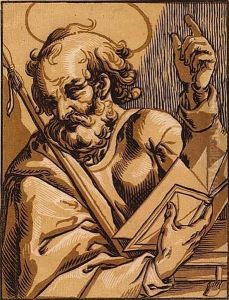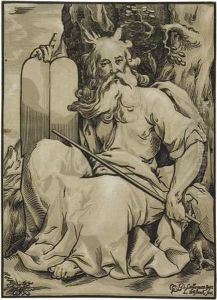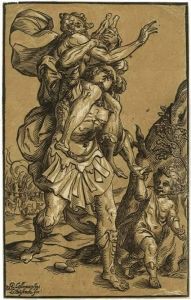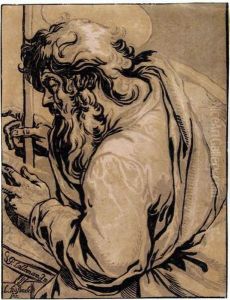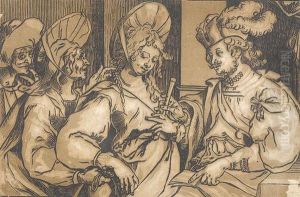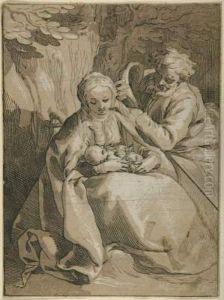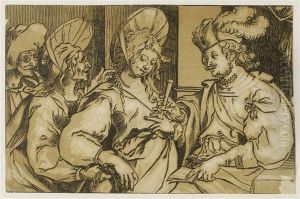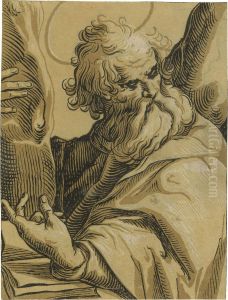Ludolph Businck Paintings
Ludolph Büsinck, a somewhat lesser-known figure in the realm of art history, was a prolific German engraver and printmaker active during the early to mid-17th century. While the exact year of his birth is not definitively known, it is estimated to have been between 1590 and 1600. He was born in Lüneburg, Germany, and his life and work are associated with the Northern European Renaissance and Baroque periods.
Büsinck's artistic career is marked by his mastery in intaglio printmaking techniques, particularly engraving and etching. He is noted for his intricate and detailed style, which was influenced by the work of other renowned artists of his time, such as Hendrick Goltzius and Jacques Bellange. Büsinck's prints often featured religious and allegorical subjects, a common theme in Baroque art, which was intended to evoke emotional responses through dramatic effects of light and shadow, as well as through complex iconography.
Unfortunately, Büsinck's life is not as well documented as that of many of his contemporaries, and as a result, details about his personal life, training, and travels remain obscure. It is assumed that he traveled to the Netherlands and possibly to France and Italy, given the stylistic influences seen in his work. His artistic output includes portraits, landscape prints, and illustrations for books, which contributed to the dissemination of Baroque aesthetics.
Despite the lack of comprehensive records, Ludolph Büsinck's contributions to the world of printmaking are still acknowledged today. He is considered an important figure in the development of the chiaroscuro woodcut, a technique that involves using multiple blocks to print different tones of the same color, which creates a more nuanced and dimensional effect in prints. This technique was instrumental in advancing the printmaking medium and is seen as a precursor to more modern methods of tonal reproduction.
Büsinck's death date is as uncertain as his birth, but records indicate that he was still living in 1669. The legacy of his work is preserved in various European collections, and though he may not be a household name, his contributions to the art of printmaking continue to be recognized by scholars and enthusiasts of early modern art.
